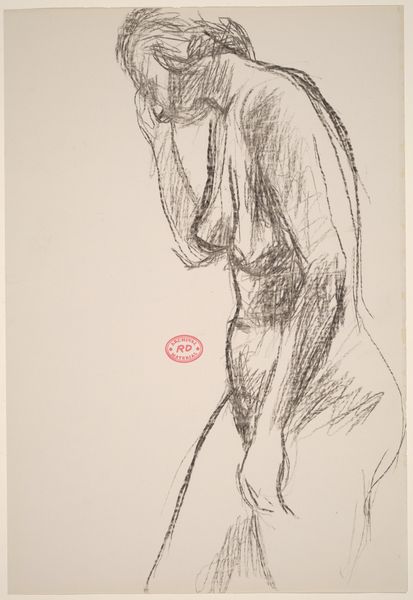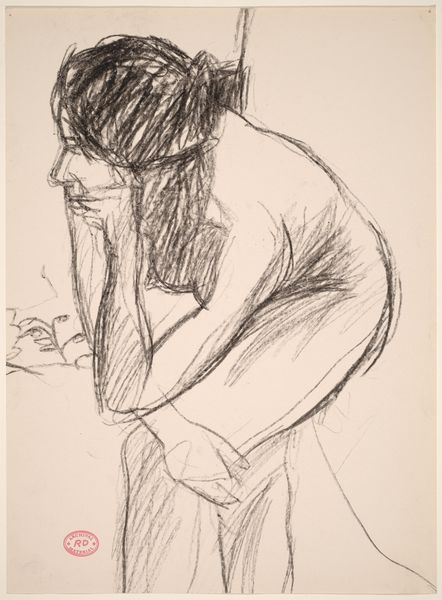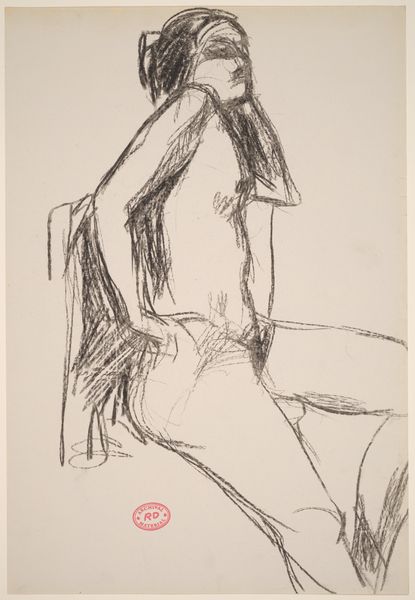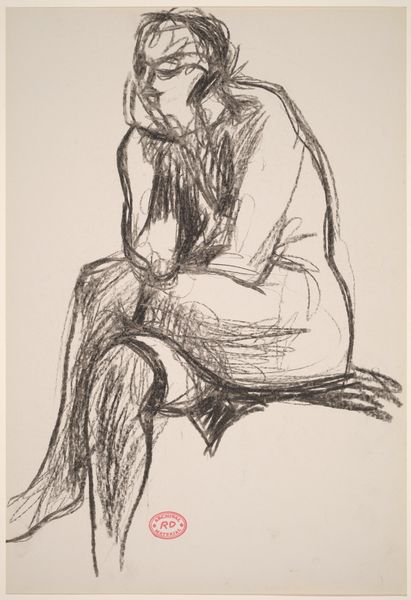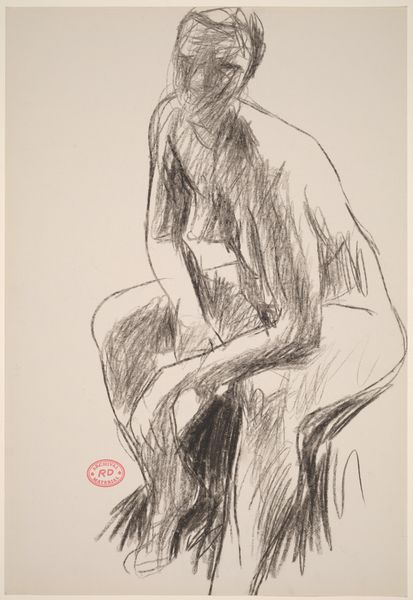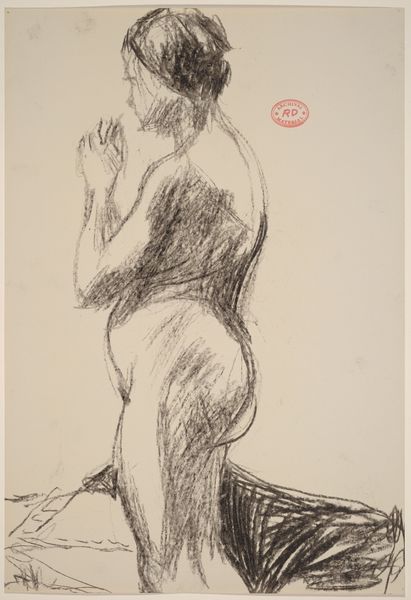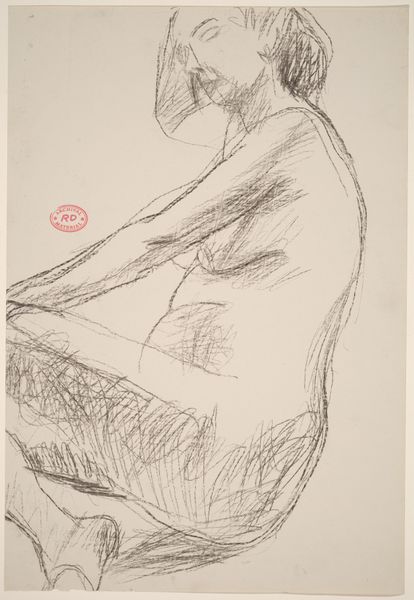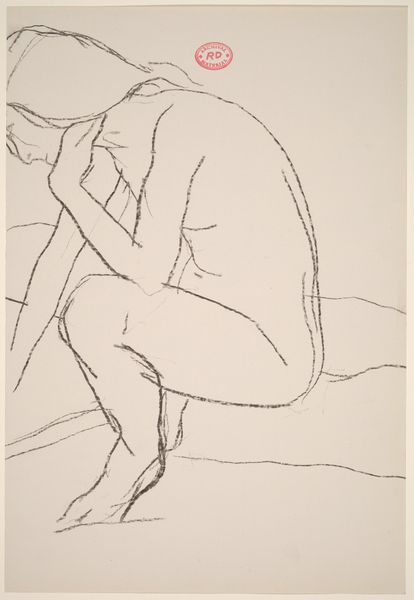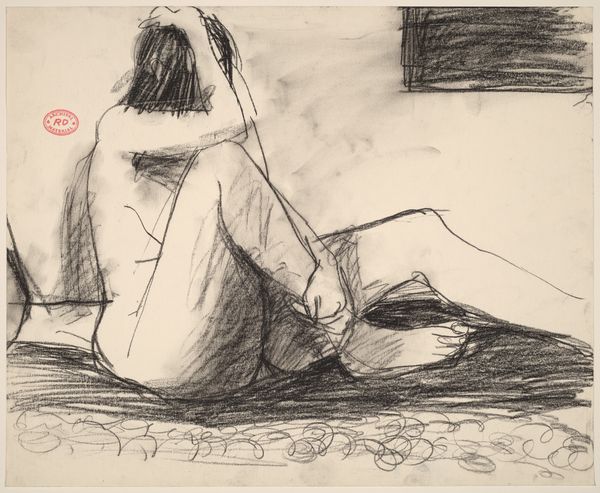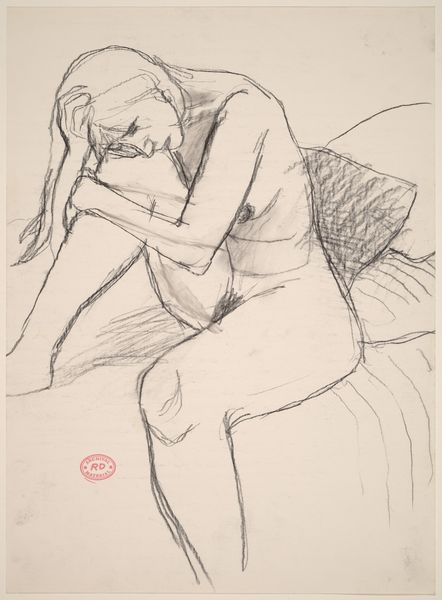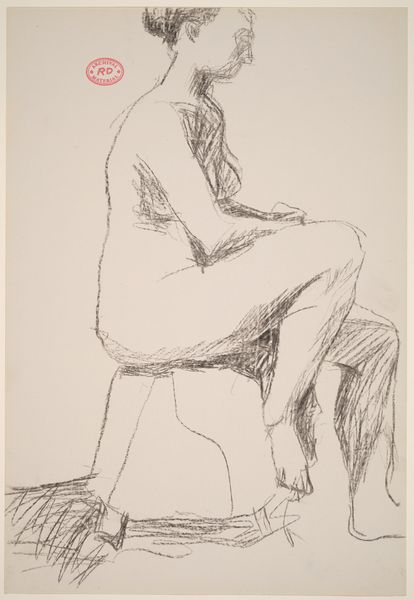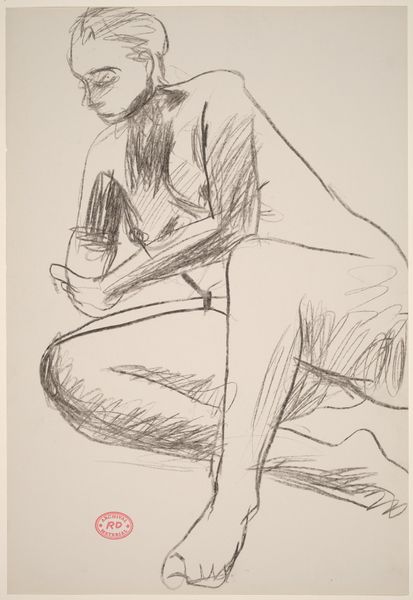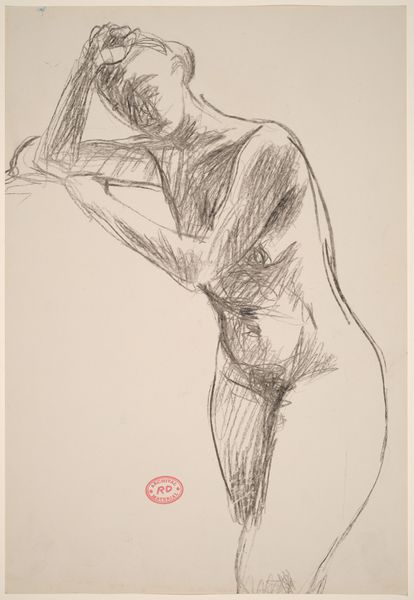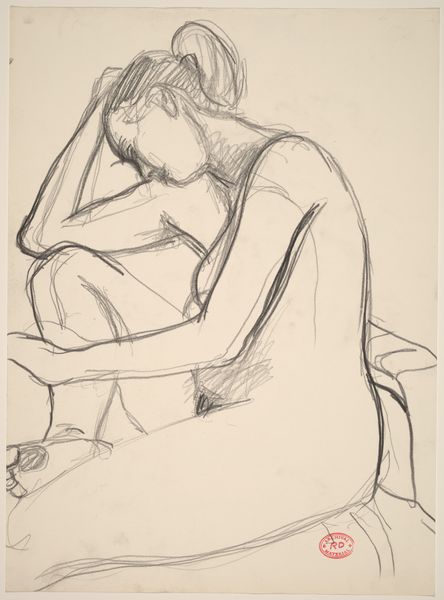![Untitled [female nude with left hand to temple] by Richard Diebenkorn](/_next/image?url=https%3A%2F%2Fd2w8kbdekdi1gv.cloudfront.net%2FeyJidWNrZXQiOiAiYXJ0ZXJhLWltYWdlcy1idWNrZXQiLCAia2V5IjogImFydHdvcmtzL2E0YWJmZmM1LWRiNzItNDQ0MS04ZTRkLTVjNzY4NDgxYWZjNy9hNGFiZmZjNS1kYjcyLTQ0NDEtOGU0ZC01Yzc2ODQ4MWFmYzdfZnVsbC5qcGciLCAiZWRpdHMiOiB7InJlc2l6ZSI6IHsid2lkdGgiOiAxOTIwLCAiaGVpZ2h0IjogMTkyMCwgImZpdCI6ICJpbnNpZGUifX19&w=3840&q=75)
Untitled [female nude with left hand to temple] 1955 - 1967
0:00
0:00
drawing, pencil
#
portrait
#
drawing
#
pencil sketch
#
figuration
#
bay-area-figurative-movement
#
pencil
#
nude
Dimensions: overall: 40.6 x 27.6 cm (16 x 10 7/8 in.)
Copyright: National Gallery of Art: CC0 1.0
Curator: Here we have Richard Diebenkorn's "Untitled [female nude with left hand to temple]", created sometime between 1955 and 1967. It's a compelling pencil drawing on paper. Editor: My first impression is of raw vulnerability. The gestural lines are so immediate; you feel the artist capturing a fleeting moment of introspection, or perhaps exhaustion. Curator: Indeed. The sketch embodies a certain spontaneity, yet if we consider Diebenkorn’s context, we can see echoes of Abstract Expressionism's influence in his process. The physicality of mark-making is almost as important as the figure itself. The paper and the graphite are basic, utilitarian materials elevated through Diebenkorn’s skill. Editor: I agree that the rapid strokes evoke movement. Consider the negative space; how it both defines and obscures the subject's form. Note the areas where the lines are more heavily concentrated, building up density and shadow around her head and torso, then quickly trailing away towards the limbs. He clearly wants us to see this weight. Curator: And it’s interesting to consider how this work reflects the changing cultural landscape of the mid-20th century. There's a sense of detachment here, a quiet contemplation, quite removed from traditional idealized portrayals of the nude. The drawing resists easy categorization as merely “high art” or just a sketch, and challenges conventional class structures and modes of exhibition. Editor: Precisely, that resistance is vital to understanding its enduring appeal. There is no superfluous detail. The composition invites you to linger, to explore how a few confident lines can suggest form, emotion, even a narrative, despite the economy of means. It is almost philosophical: what are the minimum requirements to make an artwork feel complete? Curator: And when viewing a work like this, it’s important to consider how access to art supplies shaped its creation and its dissemination within various communities. It is essential that we see how consumption patterns dictated which populations got which artworks at what moments of societal change. Editor: Agreed. This intimate sketch exemplifies the power of reduction and suggests a shared vocabulary of artistic practice reduced to its most minimal material presence: the pencil on paper. A testament to line and form in their purest sense.
Comments
No comments
Be the first to comment and join the conversation on the ultimate creative platform.
